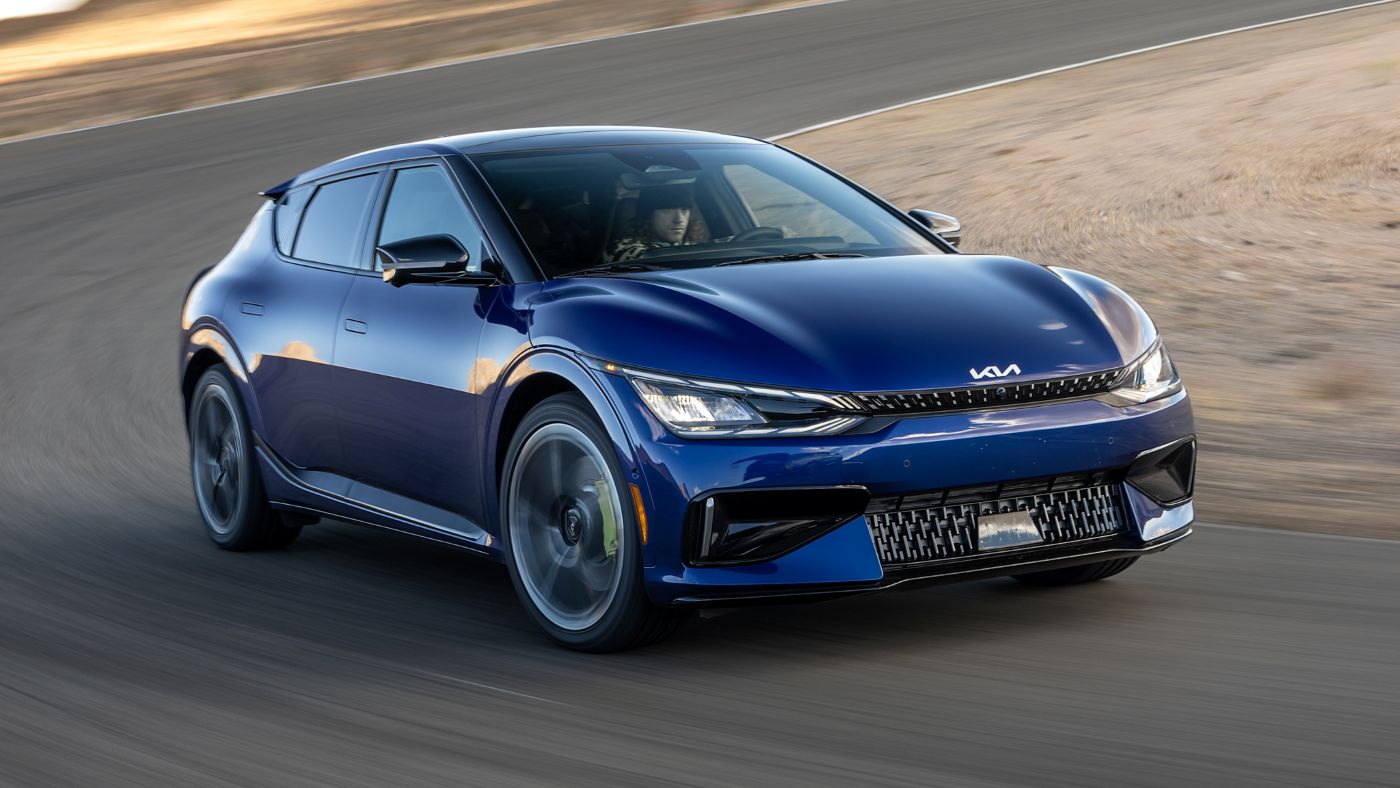When it comes to electric vehicles, it’s not just about battery range or 0–60 times anymore — software now plays a central role in how enjoyable (or painful) your daily drive is. The car industry is still catching up to the fact that they’re building computers on wheels. Some automakers get it right, treating software as a core product.
They release cars with clunky, glitch-prone systems and pray that OTA updates will fix things someday. If you’re in the market for a new EV, here are five electric cars known for stable, reliable software, and five that are infamous for buggy tech and frustrating digital experiences.
5 Electric Cars With Rock-Solid, Reliable Software
Clunky touchscreens, frozen infotainment systems, and glitchy mobile apps have turned many promising EVs into high-tech headaches. But a few brands are actually getting it right — combining strong hardware with polished, dependable software that just works.
In this article, we’re cutting through the noise and spotlighting five electric vehicles with rock-solid, reliable software — cars that prove tech-savvy driving doesn’t have to come with a side of daily frustration.
Tesla Model 3/Y (2024–2025)
Tesla continues to lead the pack when it comes to in-car software. Despite all the chaos that tends to swirl around Elon Musk, the software in Tesla’s Model 3 and Model Y remains a strong suit. The UI is sleek and highly responsive, updates arrive frequently (sometimes weekly), and features like voice control and navigation are reliably accurate.
Tesla also pioneered over-the-air (OTA) updates for vehicles, allowing owners to receive new features and performance improvements without stepping into a dealership. While some might gripe about the lack of Apple CarPlay or Android Auto, Tesla’s proprietary ecosystem is so well-integrated that many owners don’t miss them.
There’s no denying it — the updated 2025 Tesla Model 3 “Highland” is a notable upgrade over its predecessor. It rides more comfortably, the cabin is better insulated from road noise, and overall refinement has improved.
Tesla has also added more standard features and tweaked the seating for better ergonomics. While driving range hasn’t increased dramatically, it remains solid — and with pricing holding steady, the Model 3 continues to offer strong value in the EV market.
Familiar strengths still define the Model 3 experience. The minimalist cabin is intuitive once you adjust to it, and the car provides generous storage for a sedan. But Tesla’s unique design decisions still polarize.
There are no stalks behind the steering wheel — controls for indicators, wipers, and drive modes have been relocated to the steering wheel and center touchscreen. That screen houses nearly every setting in the car, which means even simple adjustments require navigating menus. It’s clean, but not always convenient.
Despite regular over-the-air software updates, Tesla’s so-called “Full Self-Driving” system remains a work in progress. It continues to promise more than it delivers — and while it’s improving, buyers expecting a truly autonomous experience will be disappointed.
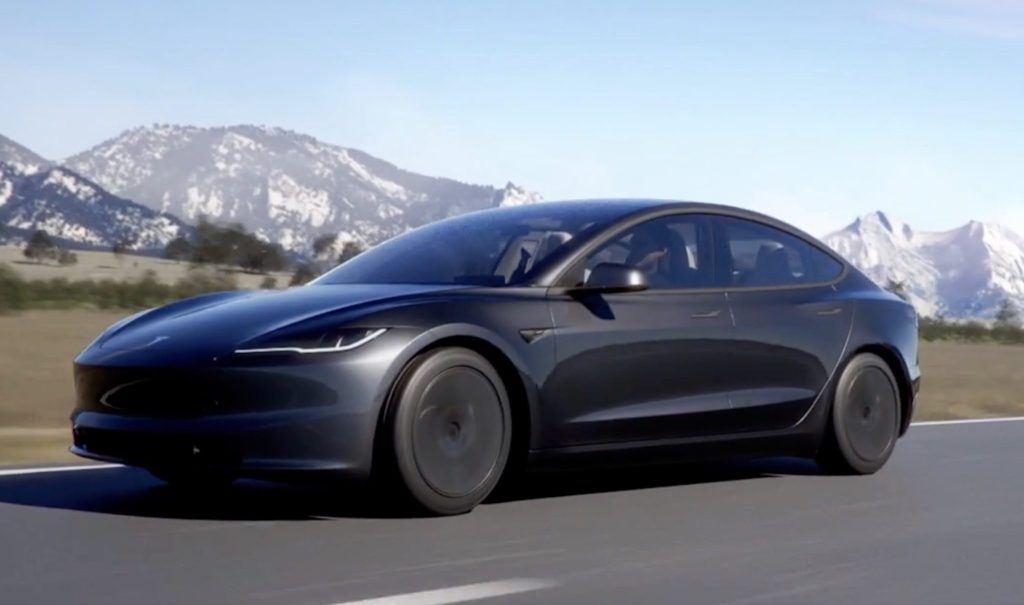
That said, the 2025 Model 3 still earns its popularity. But it’s no longer the uncontested benchmark. Rivals from Hyundai, BMW, and Polestar now exceed the Model 3 in several key areas, including comfort, interface usability, and interior quality.
Tesla offers multiple powertrain configurations for the 2025 Model 3. The base Long Range RWD model comes with a single rear-mounted motor producing 257 horsepower and 266 lb-ft of torque.
Tesla claims an EPA-estimated 363 miles of range, but real-world testing has historically fallen short of those numbers. Still, thanks to Tesla’s high efficiency, home charging remains incredibly cost-effective.
Stepping up to the Long Range AWD version gets you dual motors delivering 394 horsepower and 377 lb-ft of torque. That trims the 0–60 mph sprint to just 4.0 seconds, while range drops slightly to 346 miles, per EPA estimates.
Charging at a Tesla Supercharger from 5% to 80% takes a little over 30 minutes — respectable, but no longer class-leading. And while Tesla’s exclusive access to its Supercharger network was once a standout feature, that advantage is fading as the network opens up to other EV brands.
For those chasing speed, the Model 3 Performance is the wild child of the lineup. With 510 horsepower, adaptive suspension, performance brakes, and a claimed 0–60 mph time of just 2.9 seconds, it delivers legitimate sports car thrills. Range dips to around 300 miles, but most buyers will see that as an acceptable trade-off for the added muscle and fun.
Inside, the Performance model features sport seats and new driving modes, including a Track Mode that allows drivers to adjust motor torque distribution. It’s a reminder that Tesla isn’t just about clean energy — it still knows how to have fun
The 2025 Tesla Model 3 Highland makes meaningful strides where it needed them: ride comfort, noise insulation, and cabin refinement. It remains one of the most efficient and fastest-charging EVs on the market.
But Tesla’s software-centric quirks — including the removal of traditional controls and the still-beta feel of its self-driving system — can make the experience more complicated than it needs to be.
It’s a smarter, sleeker Model 3. But in an increasingly competitive EV market, it’s no longer the only smart choice.
Hyundai Ioniq 6 / Kia EV6
The Hyundai Motor Group — which includes Hyundai, Kia, and Genesis — has become a quiet champion in the EV space, and their software is a big reason why. The systems found in the Ioniq 6 and Kia EV6 are logically laid out, fast to respond, and largely bug-free.
Unlike many competitors, the infotainment doesn’t crash or freeze under pressure, and key features like climate control, navigation, and remote app functionality work consistently.
While the user interface may not be as flashy as Tesla’s, it’s far more reliable than most. OTA updates are being rolled out gradually across their lineup, and full wireless smartphone integration is available — a huge plus.
Whether you admire it or not, the 2025 Hyundai Ioniq 6’s bold exterior design is impossible to ignore. And even if its striking look doesn’t immediately win you over, its outstanding electric range and high-speed charging capabilities most likely will.
The Ioniq 6 is available with two battery pack options — a 53-kWh or a 77.4-kWh — and buyers can also choose between rear-wheel drive or all-wheel drive. When configured for maximum efficiency, the Ioniq 6 achieves an EPA-estimated range of 361 miles on a single charge.
Beyond those specs, the Ioniq 6 stands out for how it drives in the real world. It’s not just the impressive range and fast charging — everyday comfort is a core part of its appeal.
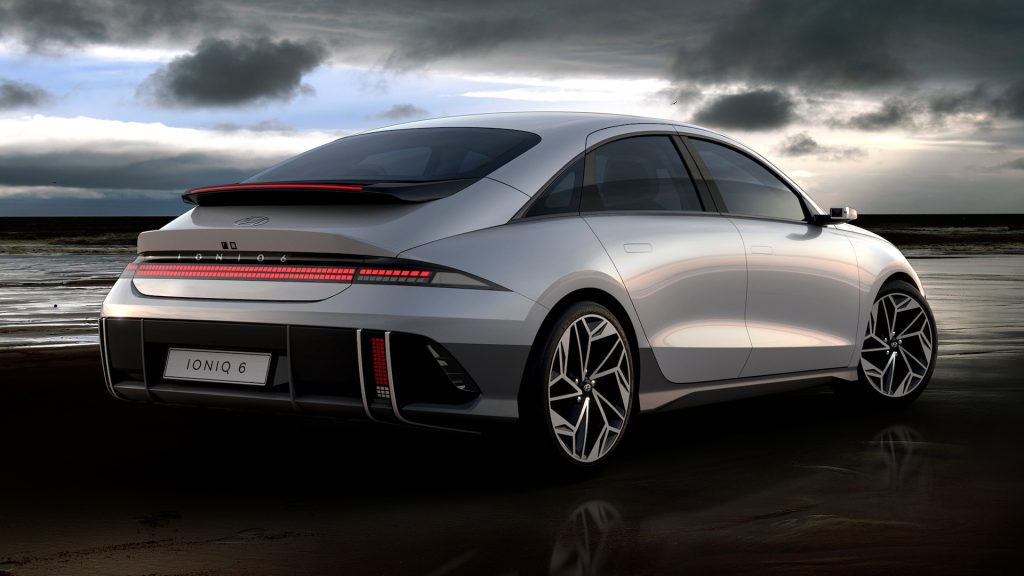
The Ioniq 6’s unconventional styling isn’t just for show — it’s carefully engineered for aerodynamics. This design helps reduce energy consumption, making the car more efficient at cruising speeds. In Edmunds’ EV Range Test, the dual-motor version we evaluated consumed only 27.5 kWh per 100 miles. When it comes to EV efficiency, lower numbers are better, and that figure beats the EPA estimate — putting the Ioniq 6 among the most efficient electric vehicles we’ve ever tested.
That exceptional efficiency translates directly to real-world range. Our test car exceeded its EPA-rated 270 miles, managing an impressive 303 miles on a single charge — a result that goes far beyond the marketing promises.
When it is time to plug in, the Ioniq 6 supports ultra-fast 350-kW DC fast charging, which drastically cuts down waiting time. Under ideal conditions, the battery can charge from 10% to 80% in just 18 minutes, letting you spend more time driving and less time tethered to a charger.
Porsche Taycan
Porsche’s Taycan surprised many by offering not just high performance but a refined and dependable software experience. Porsche’s multi-screen setup is cleanly executed and offers snappy performance with minimal lag.
The infotainment system is highly customizable, and it rarely crashes or bugs out — a rarity for luxury automakers still playing catch-up in the tech department.
While it’s not as update-happy as Tesla, Porsche has started rolling out meaningful OTA updates that improve usability and fix minor quirks. The My Porsche app also provides reliable remote access, standing head and shoulders above many German rivals.
For 2025, the Porsche Taycan receives a modest exterior refresh that brings subtle revisions to the front bumper, headlamps, fenders, and taillights. While these visual tweaks refine the car’s look, the most meaningful changes are found beneath the surface.
Drivers concerned with range and charging convenience will be especially pleased to learn that Porsche has introduced updates aimed at enhancing DC fast-charging speed. During testing, we were able to charge the Taycan from 8 to 80 percent in just under 17 minutes, achieving a peak charging rate of 327 kilowatts.
Battery upgrades are a core part of the 2025 update. Porsche now equips the Taycan with an 83.6-kWh battery pack as standard, while a larger 97.0-kWh Performance battery is offered as an option. Notably, this upgraded battery is also lighter than the pack it replaces, contributing to improved efficiency and performance.
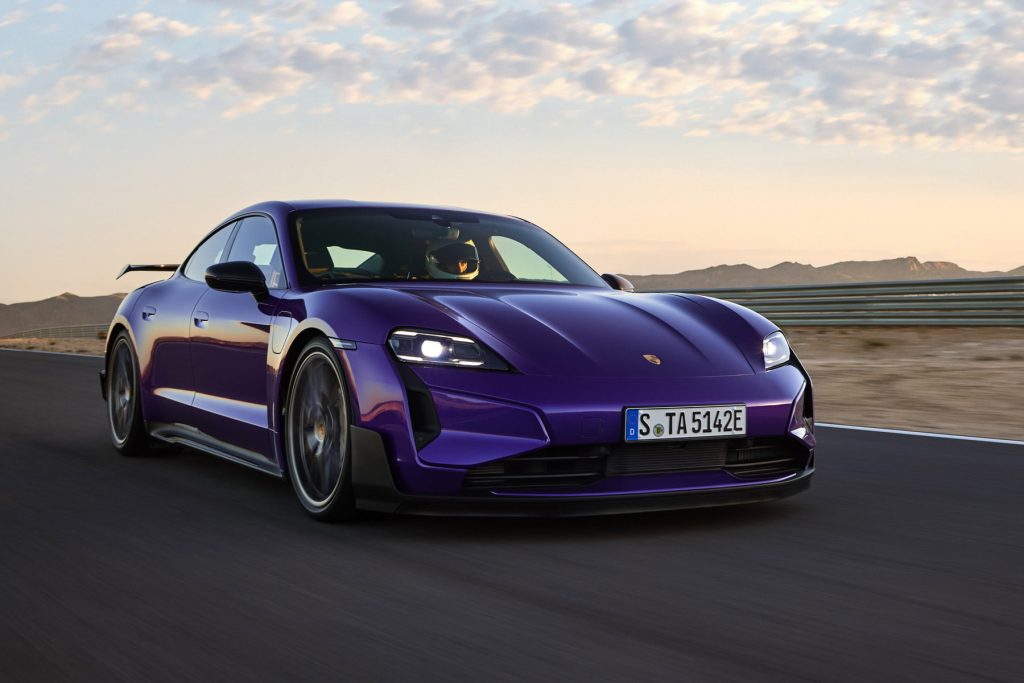
The rear-mounted electric motor has also undergone revisions, shedding weight and becoming more efficient according to Porsche. The combined effect of a lighter powertrain and increased battery capacity is expected to deliver better driving-range estimates, though official EPA numbers are still pending.
A significant addition to the lineup is the new Taycan Turbo GT, a high-performance variant that delivers a staggering 1019 horsepower, up to 340 miles of driving range, and carries a price tag of $231,995. With the optional Weissach package, this model recently set a lap record at Laguna Seca, cementing its credentials as a serious performance machine.
Inside the cabin, the Taycan receives several notable infotainment upgrades. Chief among them is the introduction of Apple CarPlay+, which now allows users to control climate settings directly within the Apple interface — eliminating the need to exit that environment to adjust temperature or airflow.
Porsche has also improved route-planning functionality, with smarter navigation that now takes the battery’s state of charge into account when suggesting routes or charging stops.
BMW i4/ iX (iDrive 8.5+)
BMW took some time to get its software right, but with iDrive 8.5, the brand finally delivered a streamlined, intuitive, and reliable interface for its EVs like the i4 and iX. Gone are the cluttered menus and sluggish response times of earlier versions — replaced with fast boot-ups, gesture controls that actually work, and voice assistance that’s quite sharp.
The system supports wireless CarPlay and Android Auto, and the BMW app allows for a smooth remote experience. There’s still a slight learning curve for those new to the iDrive ecosystem, but once you’re in, it’s smooth sailing.
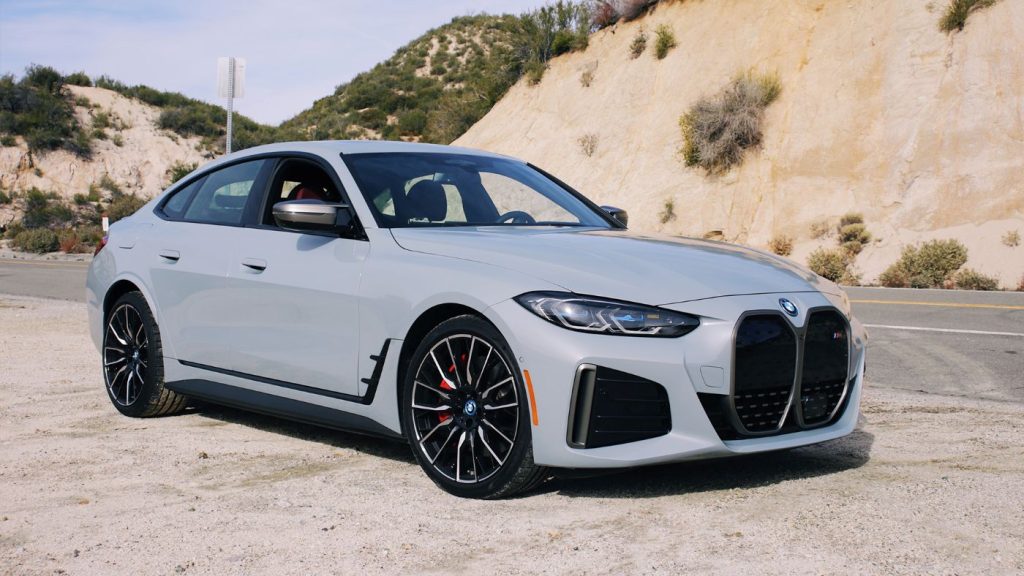
The BMW i4 approaches the electric sedan segment with quiet confidence, opting to forgo hype in favor of substance. Rather than trying to reinvent the wheel, the i4 builds on BMW’s established reputation for crafting refined, engaging sedans, seamlessly integrating a modern EV powertrain into that formula.
Sharing key components and design cues with the respected 3-series and 4-series Gran Coupe, the i4 doesn’t treat its electric identity as a gimmick or compromise — it presents it as “a bonus, not a consolation prize.” That sentiment rings true, and it’s part of the reason the i4 has secured a place on our Editors’ Choice List.
Polestar 2/ 3
Polestar, Volvo’s performance EV offshoot, runs its vehicles on Google’s native Android Automotive OS — not to be confused with Android Auto. This means Polestar 2 and 3 come with Google Maps, Assistant, and Play Store baked right into the car itself. The result is a modern, intuitive experience that feels like driving a Google-powered dashboard.
Voice control works reliably, the interface is clean and modern, and OTA updates have been consistent in improving functionality without introducing new bugs. It’s a minimalist setup, but it’s fast, smart, and rarely frustrating — which is all you can ask for in a car UI.
Since its debut in 2021, Polestar has continued refining the Polestar 2, an electric hatchback that blurs the line between a traditional car and a crossover.
Over the years, the automaker has experimented with motor configurations, battery capacities, and drivetrain layouts. Now, for the 2025 model year, Polestar has settled on a single, definitive setup: the 2 is offered exclusively with the brand’s largest battery pack, all-wheel drive, and the Performance package’s high-output motors as standard.
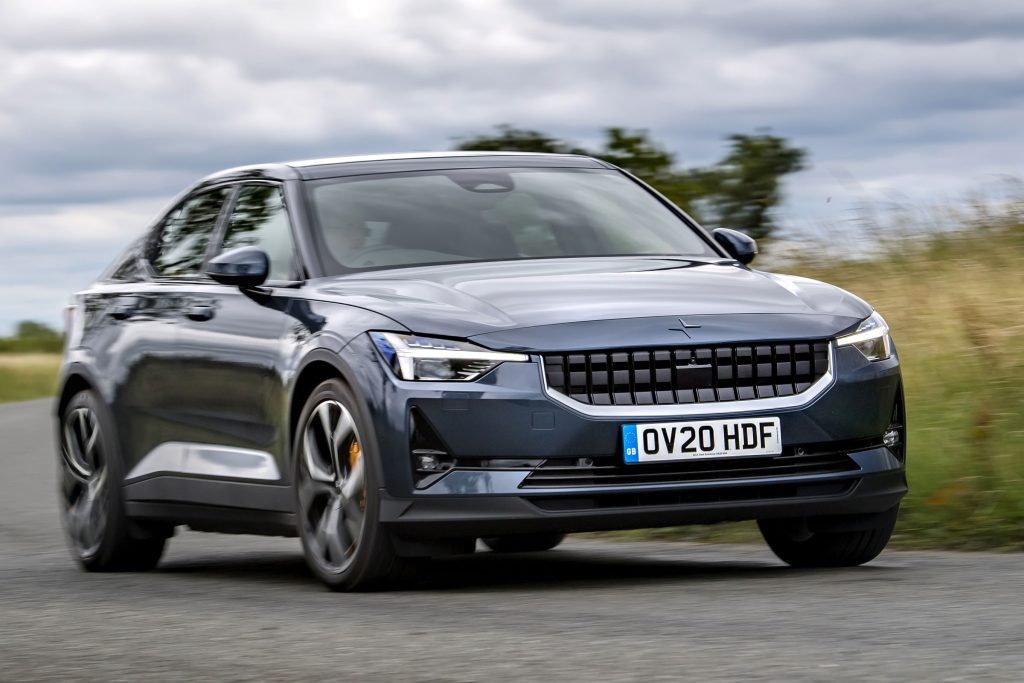
This means the latest version of the Polestar 2 comes equipped with a 469-hp dual-motor all-wheel-drive powertrain, paired to a 79.0-kWh battery. The result is an EPA-estimated range of 254 miles, which places it in the middle of the pack in terms of driving distance per charge.
A distinct Scandinavian design ethos continues to define the car’s aesthetic, with minimalist exterior styling and a subtly upscale cabin. The interior also features a Google-based infotainment system that is described as “spare in its looks but easy to navigate.”
On the road, the Polestar 2 delivers respectable acceleration, and the standard Performance pack chassis upgrades make it notably agile and engaging to drive.
Still, it faces stiff competition. The market is filled with EVs that are quicker, offer more range, and come at a lower price—and the Tesla Model 3 checks all three boxes, making the Polestar 2 a more challenging proposition for buyers focused purely on value and performance.
5 Electric Cars With Buggy, Frustrating Software
In this article, we’re diving into five electric cars with buggy, frustrating software — vehicles that may look great on paper but leave drivers wrestling with tech that just doesn’t live up to the promise. If you’re shopping for an EV, this is the side of the story most marketing teams won’t tell you — but owners definitely will.
Ford Mustang Mach-E (2021–2023 builds especially)
The Mustang Mach-E is a great EV with a strong platform, but Ford’s software has been a chronic weak point. Especially in early models (2021–2023), the Sync 4A system was plagued with issues — from frozen touchscreens to random reboots mid-drive.
The app experience hasn’t been much better, with common complaints about failed lock/unlock attempts and incorrect charge status reports. While Ford has tried to patch things through OTA updates, the damage to user trust is already done. The system has gotten better, but even 2025 models still lag behind competitors in responsiveness and polish.
The 2025 Ford Mustang Mach-E is a fully electric SUV designed to seat five passengers and is offered in three primary trim levels: Select, Premium, and GT. Each trim is available with a variety of battery and motor configurations, which directly affect the vehicle’s power output and EPA-estimated driving range.
Ford equips the Mach-E with either a standard-size battery pack or an optional Extended Range battery. Buyers can also choose between a single electric motor that powers the rear wheels or dual electric motors for all-wheel drive capability. The specific combination of battery and motor dictates the vehicle’s performance figures.
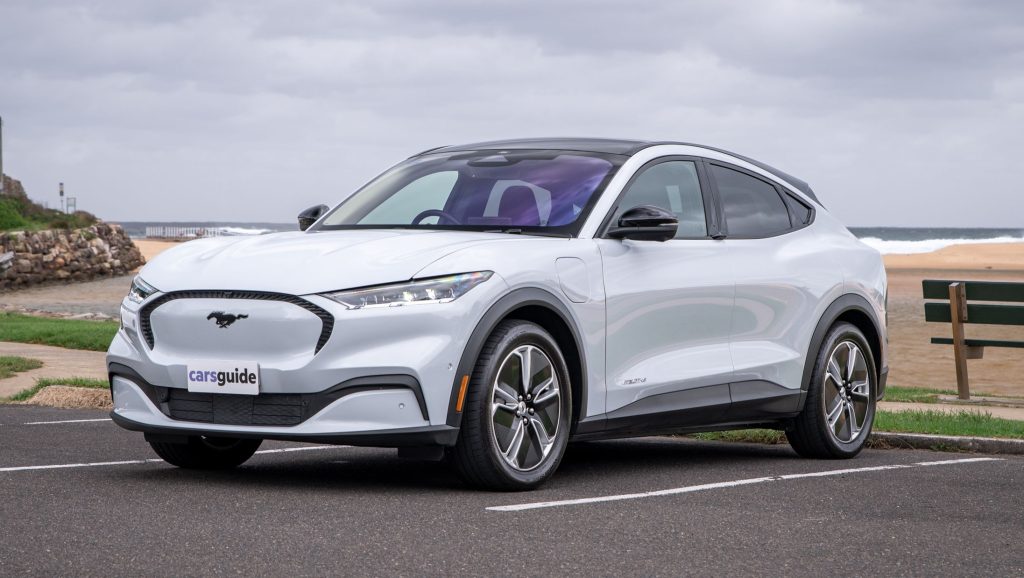
For instance, the single motor paired with the standard battery pack delivers “264 horsepower and 387 lb-ft of torque.” If you opt for dual motors with the standard battery, output increases to “325 hp and 500 lb-ft of torque.”
Choosing the Extended Range battery with a single motor bumps power slightly to “290 hp and 387 lb-ft,” while dual motors with the same larger battery generate “365 hp and 500 lb-ft.”
At the top of the lineup is the GT model, which also uses dual motors and the Extended Range battery but comes with significantly more power. The standard GT trim produces “480 hp and 600 lb-ft,” and with the available Performance Upgrade package, torque increases to “700 lb-ft,” while horsepower remains the same.
As for driving range, that also depends on the configuration selected. Mach-E models equipped with the standard battery typically deliver between “230–250 miles of range,” while those with the Extended Range battery can reach between “300–320 miles” on a full charge. These figures make the Mach-E competitive in the growing electric SUV market, especially for those who prioritize flexibility in performance and range.
Volkswagen ID.4/ ID. Buzz
Volkswagen’s software division, Cariad, has become something of a cautionary tale in the auto world. The ID.4 and ID. Buzz are great cars held back by sluggish, unreliable software. Touchscreens lag, freeze, or misinterpret inputs. OTA updates are supposed to be a saving grace but often take hours to complete or simply fail.
Even basic features like climate control or route planning can glitch out unexpectedly. VW promised a software reboot for newer models, but even the 2024–2025 builds haven’t fully solved the issue. Owners report continued frustration with an otherwise solid car.
At this point, it’s fair to say that the Volkswagen ID.4 has developed a bit of a reputation. Initially positioned as the vehicle that would launch Volkswagen’s all-electric transformation in the U.S.—a shift made necessary by the company’s emissions cheating scandal—the ID.4 was intended to represent a clean slate.
However, in its attempt to deliver the “car of the future,” Volkswagen’s first effort ended up feeling somewhat half-baked. The vehicle was plagued by faulty software, a frustrating user experience, widely criticized window switches, and a cabin that didn’t quite live up to expectations given its price point.
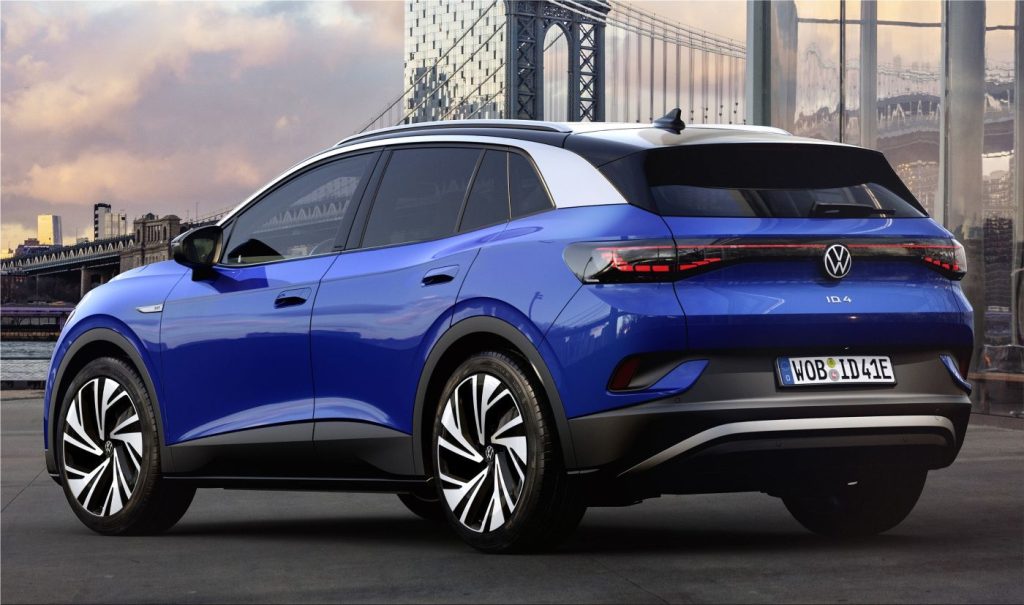
Like many legacy automakers attempting to leap into a high-tech EV future, Volkswagen has faced significant growing pains, and the ID.4 has often seemed like a casualty of those broader struggles.
But here’s the thing: the ID.4 hasn’t exactly been a failure. In fact, last year it accounted for a solid 11.5% of Volkswagen’s total U.S. sales—an impressive figure, especially when you consider that most electric vehicles are still stuck in the single-digit percentage range.
Thanks to VW’s strategic decision to manufacture the ID.4 in the United States, the vehicle qualifies for federal EV tax credits, giving it a financial edge over many rivals that remain ineligible. Beyond that, the ID.4’s first generation has picked up a number of industry awards, signaling that, despite its flaws, the model has had a noteworthy impact.
For those inclined to believe that Volkswagen—or any major automaker—can adapt and improve as the EV era accelerates, the updated 2024 ID.4 offers a reason for optimism.
While some of the old frustrations haven’t been entirely eliminated, the latest version introduces significant improvements. New motors, larger battery options, increased driving range, and, most importantly, vastly better software all work together to make the ID.4 more compelling now than it has ever been.
Lucid Air
The Lucid Air is one of the most beautiful, high-performance EVs on the market — but its software is holding it back in a big way. Lucid’s custom interface, Lucid UX, is ambitious, but not ready for prime time. Owners routinely complain about freezing screens, delayed camera feeds, and infotainment systems that refuse to load properly.
Even essential features like door sensors and climate controls sometimes fail to respond. Lucid pushes OTA updates frequently, but many users report that new bugs often appear with each fix. It’s a beta experience in a six-figure car, and that’s hard to forgive.
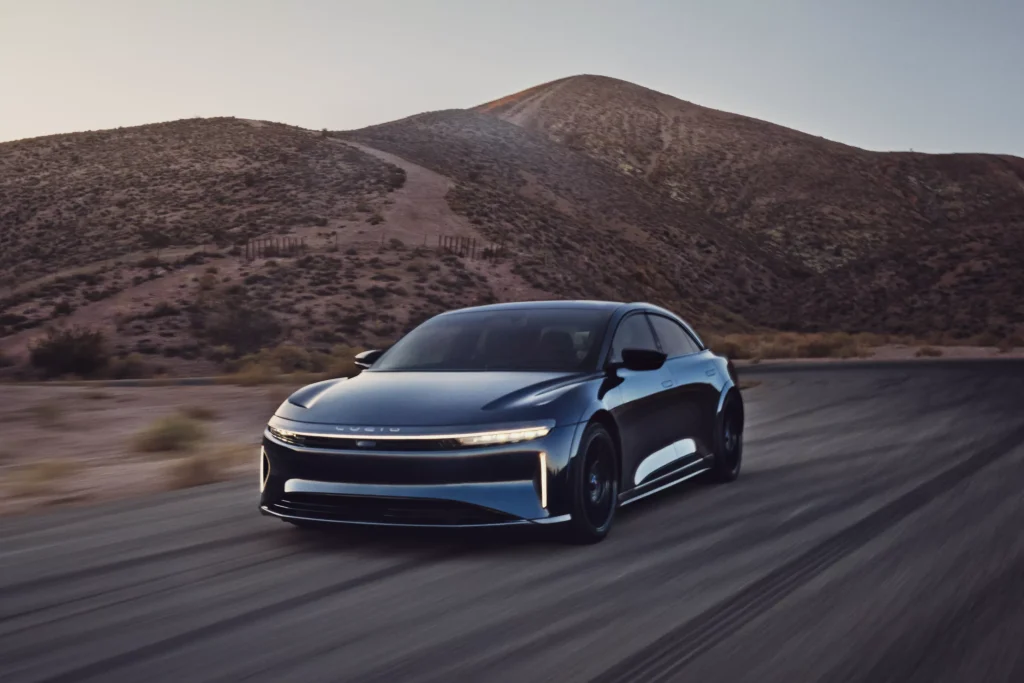
The 2025 Air is an all-electric luxury sedan produced by Lucid, a California-based electric vehicle startup that entered the scene just a few years ago. Initially, the Air fell short of expectations when it came to technology and build-quality refinement—two core areas that define a true luxury sedan.
Fortunately, Lucid has made meaningful strides since that early impression. The automaker has lowered the Air’s price, added new features, updated its technology, and boosted performance.
As production has ramped up, we’ve also observed noticeable improvements in build quality. For the 2025 model year, Lucid continues to enhance the Air by introducing additional standard features across all trim levels, upgrading the infotainment system hardware to deliver faster response times, and equipping the Pure and Touring variants with an efficiency-enhancing heat pump.
Rivian R1T/ R1S
Rivian’s rugged, off-road-ready EVs are packed with personality, but their software still feels like it’s in a test phase. The interface looks slick, but lag and stuttering are frequent.
Driver profiles reset themselves, key fobs and apps don’t always sync properly, and the UI occasionally reboots mid-drive. While Rivian deserves credit for delivering meaningful OTA updates, the platform feels unstable — like they’re building the plane while flying it. Early adopters have learned to live with the bugs, but they shouldn’t have to.
It might not appear drastically different on the outside, but Rivian has made substantial updates to its electric truck, the R1T. Slightly larger than a typical midsize pickup, the latest R1T hides most of its changes beneath the surface.

These improvements include revamped powertrains, enhanced software, new features, and various refinements that make this updated version a compelling option in the EV truck space.
For those who prioritize driving range, the R1T now offers up to 420 miles on a single charge. If raw power and acceleration are more your style, Rivian has introduced the new 850-horsepower Tri Max and the staggering 1,025-horsepower Quad Max models.
Off-road enthusiasts won’t be disappointed either—every R1T is capable, but the new Ascend trim level adds even more off-road modes to enhance that capability. And if you need to tow, the R1T delivers there too, with a towing capacity that ranges from a competitive 7,700 to 11,000 pounds.
Nissan Ariya
Nissan took its time bringing the Ariya to market, and yet the software still feels like an afterthought. The UI is sluggish and clunky, with touch responses that lag and voice commands that rarely understand what you’re saying.
The navigation system feels like something out of 2012, and even simple functions like toggling climate control can be frustrating. Worse, the Nissan app is notoriously unreliable, often failing to update charge status or even connect at all. It’s a shame, because the Ariya has solid driving dynamics — but the software is dragging the entire experience down.
Nissan entered the EV space early with the Leaf, but it wasn’t until the Ariya arrived on U.S. roads in 2023 that the automaker had a truly competitive compact electric SUV to offer. The Ariya is available with two battery pack options and offers either front- or all-wheel drive, delivering between 265 and 304 miles of EPA-estimated range.
The dual-motor AWD variants, in particular, provide respectable—though not especially exhilarating—performance. That sentiment extends to its overall driving character: capable, but lacking excitement. Where the Ariya does stand out is in its design. It boasts a sleek, well-tailored exterior and an interior that’s both stylish and impressively refined.

In fact, the cabin may be the most upscale in Nissan’s entire lineup, featuring quality materials that both look and feel premium. A notable highlight is the row of haptic control buttons embedded in a wood trim strip that spans the dashboard, adding a modern design twist.
Complementing this are dual 12.3-inch screens that deliver crisp visuals across both the driver display and center stack. In the back, a modular cargo storage system makes it simple to organize your gear—keeping road trip snacks separate from luggage or preventing the dog from stomping on your groceries.
That said, the Ariya isn’t without its shortcomings. Its DC fast-charging capability is average at best, and when you look at the upper trims, the pricing starts to overlap with luxury competitors like the Audi Q4 e-tron and Lexus RZ. In the current rankings for Best Electric Compact SUVs, the Ariya sits at number 7.
Above it are segment leaders like the Hyundai Ioniq 5 N, Kia EV6, Ford Mustang Mach-E, and Volkswagen ID.4. Still, there’s new value added for 2025. All trims now come standard with a wireless phone charger, and slower USB-A ports in the rear have been swapped out for faster USB-C ones.
However, the entry-level Engage model is equipped with a smaller battery and delivers a more limited estimated range of 216 miles. Given that range is a major factor in making the leap from gas to electric, we recommend stepping up to the Evolve+ trim, which offers the best driving range in the lineup.
Performance-wise, the base Ariya Engage uses a single motor that produces 238 horsepower and powers the front wheels. While it doesn’t feel particularly brisk—especially by EV standards—it’s adequate for everyday driving. The all-wheel-drive e-4ORCE variants come with either 335 or 389 horsepower, depending on the trim.
As EVs evolve, software is becoming just as important as range, performance, or charging speed. A buggy system can turn a futuristic vehicle into a daily source of stress. Brands like Tesla, Polestar, and Hyundai understand this and treat software as a core product, not an afterthought. Meanwhile, companies like VW, Ford, and Lucid are learning the hard way that half-baked tech isn’t just annoying — it kills brand trust.
If you’re shopping for an EV in 2025, don’t get distracted by gimmicks or horsepower. Dig into real-world user reports, watch review videos, and check forums like Reddit or owner Facebook groups. That’s where the real story gets told — not the press releases. In this new EV era, a car is only as good as its last software update.

